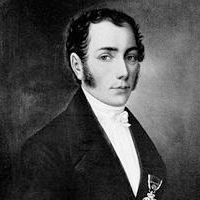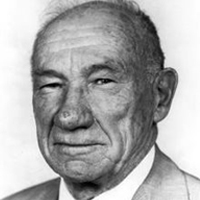Get Involved
Joseph Fraunhofer Award / Robert M. Burley Prize
The award was established in 1981 to honor Joseph Fraunhofer for his contributions to the field of optical engineering.
In 1992 the Robert M. Burley Prize was added in memory of Burley, who exemplified many of the highest attributes of the optical engineer and was the first recipient of the Fraunhofer Award.
Society Connection
While Joseph Fraunhofer’s work pre-dates the founding of the society, he is considered as one of the founders of modern optics, researching fundamental physical phenomena critical to the field such as light, heat, sound, and magnetism.
Robert M. Burley was a Fellow of the society and made many contributions to optics and electro-optics over the course of his 50+ year career.
Key Funders
Baird Corporation, Burley Family, Prof. Shin-Tson Wu
About Joseph Fraunhofer
 Fraunhofer was born in Straubing, Bavaria in 1787 into a family of master artisan glassmakers. Orphaned at the age of 11, he began working as an apprentice for Philipp Anton Weichelsberger, a court mirror maker and decorative glasscutter. In 1801, Weichelsberger’s workshop collapsed, burying Fraunhofer in the rubble. Prince Elector Maximilian Joseph IV surveyed the scene of the accident and became Fraunhofer’s benefactor, providing him with books and the opportunity to continue his education.
Fraunhofer was born in Straubing, Bavaria in 1787 into a family of master artisan glassmakers. Orphaned at the age of 11, he began working as an apprentice for Philipp Anton Weichelsberger, a court mirror maker and decorative glasscutter. In 1801, Weichelsberger’s workshop collapsed, burying Fraunhofer in the rubble. Prince Elector Maximilian Joseph IV surveyed the scene of the accident and became Fraunhofer’s benefactor, providing him with books and the opportunity to continue his education.
In 1806, Fraunhofer worked as an optician at the Untzschneider Optical Institute at Benedictbeuern, near Munich. There he discovered how to make the fine optical glass and invented precise methods for measuring optical dispersion. In 1814, he discovered and studied the dark absorption lines in the spectrum of the sun now known as Fraunhofer lines.
Fraunhofer became the director of the Institute in 1818. He implemented standardized production methods and substantially extended the Institute´s product range to include telescopes, binoculars, microscopes, and magnifying glasses. He succeeded in manufacturing telescopes in a quality that had never been seen before. He developed a spectrometer to investigate sunlight and other sources of light with extraordinary precision; and optical gratings to analyze the phenomenon of diffraction and describe its effects on the manufacture of optical instruments.
He earned an honorary doctorate from the University of Erlangen in 1822 and was elected a full member of the Academy of Sciences. In 1824, he was appointed a Knight of the Order of Merit of the Bavarian Crown by King Maximilian I, through which he was raised into personal nobility (with the title "Ritter von", i.e. knight). The same year, he was also made an honorary citizen of Munich. He died on June 7, 1826.
About Robert M. Burley
 Burley graduated from Harvard in 1929 but remained at the School of Electrical Engineering to complete his postdoctoral work in electronics.
Burley graduated from Harvard in 1929 but remained at the School of Electrical Engineering to complete his postdoctoral work in electronics.
From 1936 – 1946 he worked as part of the Eclipse Pioneer Division at Bendix Aviation Corporation. This work included driftmeters, gyro horizons and gyro-controlled computing airborne sights.
He then spent two years on inertial and electromagnetic guidance systems at the Consolidated Vultee Aircraft Corporation, before joining Specialties, Inc. in 1948 to work on servo and gyro systems.
Burley joined Baird Corporation in 1952. Throughout his career he was involved with the development of a great range of optical and electro-optical devices such as night vision and optical tracking systems.
He is known for his development of the night vision goggle system and fiber optic bundle beam expander with image intensifier.
